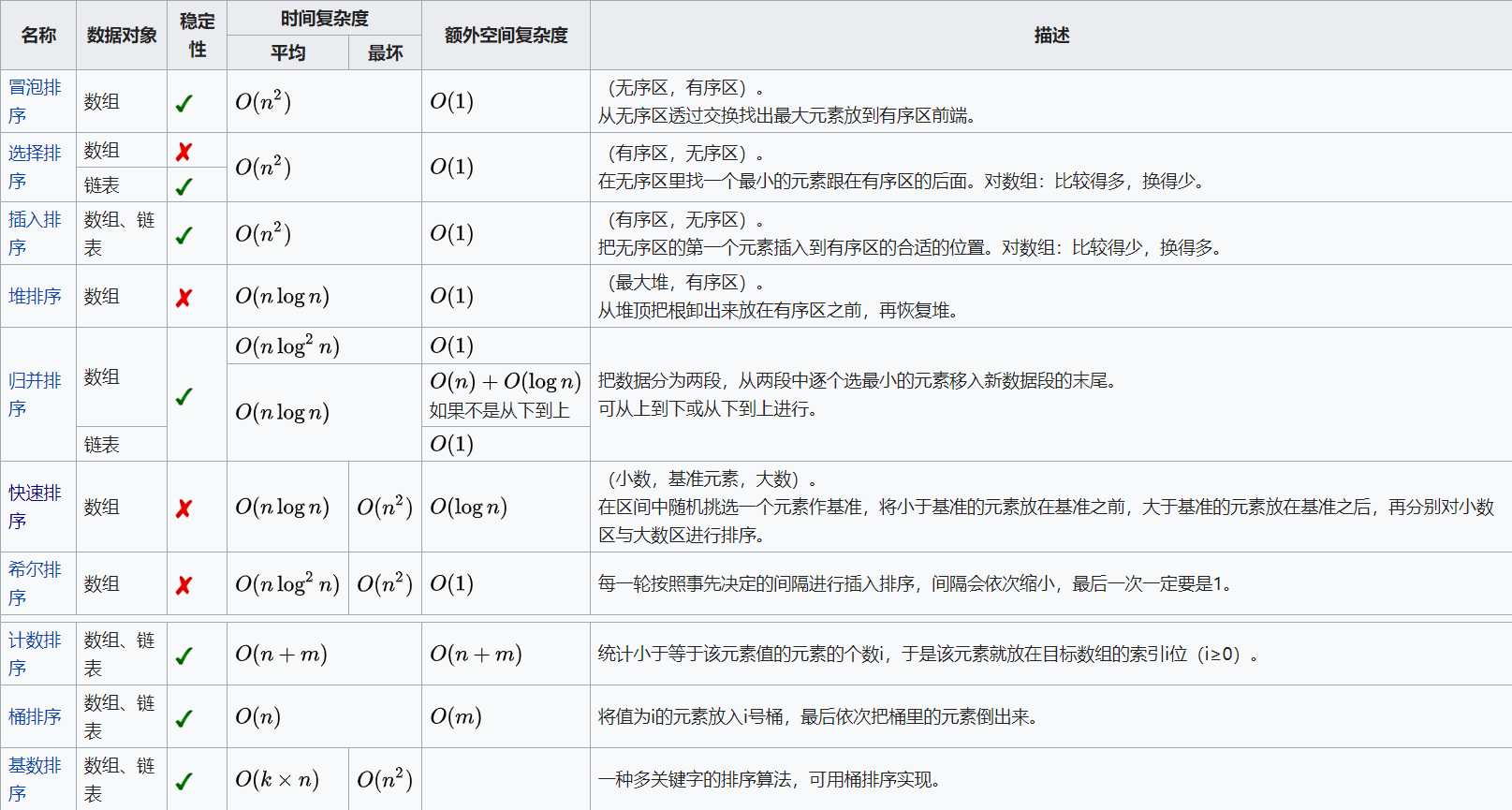文章全部来自公众号:爱写bug
算法是一个程序的灵魂。
Given an array of 2n integers, your task is to group these integers into n pairs of integer, say (a1, b1), (a2, b2), ..., (an, bn) which makes sum of min(ai, bi) for all i from 1 to n as large as possible.
给定长度为 2n 的数组, 你的任务是将这些数分成 n 对, 例如 (a1, b1), (a2, b2), ..., (an, bn) ,使得从1 到 n 的 min(ai, bi) 总和最大。
Example 1:
Input: [1,4,3,2]
Output: 4
Explanation: n is 2, and the maximum sum of pairs is 4 = min(1, 2) + min(3, 4).
Note:
- n is a positive integer, which is in the range of [1, 10000].
- All the integers in the array will be in the range of [-10000, 10000].
提示:
- n 是正整数,范围在 [1, 10000].
- 数组中的元素范围在 [-10000, 10000].
解题思路:
其实就是把 数组排序,然后按顺序 每两个数既是一对,每对的第一个数累加之和即为所求。就是考一下各类排序算法的性能。
先使用内置 sort() 函数理解一下思路:
Java:
import java.util.Arrays;
class Solution {
public int arrayPairSum(int[] nums) {
Arrays.sort(nums);
int sum=0;
for (int i=0;i<nums.length;i+=2){
sum+=nums[i];
}
return sum;
}
}
扩展:
维基百科上对排序算法介绍的非常详细,并且进行了归类比较,地址: https://zh.wikipedia.org/wiki/%E6%8E%92%E5%BA%8F%E7%AE%97%E6%B3%95
这里简单推荐两个:
- 快速排序(quick sort)—
期望时间,
最坏情况;对于大的、随机数列表一般相信是最快的已知排序(C语言标准库的
qsort()排序用的就是快速排序算法,利用递归和分而治之思想) - 桶排序(bucket sort)—
;需要
额外空间(典型的牺牲空间换时间)
冒泡排序、选择排序都是比较简单容易理解,复杂度是 n^2 ,所以不再赘述。

